Aponogeton natans
Scientific name: Aponogeton natans
Family: Aponogetonaceae
Maximum size reached under cultivation: 45 - 50 cm (17.72 - 19.69 inch)
014
Recommended pH range: 6 - 8
Recommended water hardness: 4 - 12°dGH (71.43 - 214.29ppm)
0°C 32°F30°C 86°F
Recommended temperature range: 22 - 28 °C (71.6 - 82.4°F)
Preferred propagation method: Seeds
Native to: South Asia
Growth rate: Fast
Recommended substrate: Fine gravel
Lighting requirements: Medium
Ideal placement in tank: Midground
🌿 Family
Aponogetonaceae
🏷️ Common Name
Floating Aponogeton
🌍 Origin
Aponogeton natans is native to India and Bangladesh, where it grows in seasonal ponds, marshes, and slow-moving rivers. It prefers warm, soft water and often experiences dry and wet seasons that influence its growth cycle.
📍 Planting Area
Middle to background. Its long, floating leaves make it suitable for tanks with plenty of vertical space. In shallow aquariums, it can create surface shade, so ensure it does not block light from reaching other plants below.
💡 Lighting Requirements
Medium lighting is sufficient, though it grows more vigorously under bright light. Floating leaves benefit from surface light exposure, while submerged growth requires consistent nutrient input.
🌱 Propagation
Aponogeton natans reproduces via seeds. In aquariums, it occasionally produces flower stalks that may reach above the water surface. These can be manually pollinated using a soft brush to transfer pollen. After fertilization, seed pods develop and can be collected once mature. Commercial propagation often relies on bulb germination or seed sowing in moist substrate.
⚙️ Difficulty
Medium. While relatively hardy once established, this plant benefits from stable water parameters, nutrient-rich substrate, and occasional pruning. It may undergo a brief dormant phase during which it drops leaves — this is normal and growth resumes if the bulb remains healthy.
📝 Short Description
Aponogeton natans is an elegant aquatic plant known for its long, lance-shaped leaves that float at the water’s surface. These leaves create natural shade and shelter for fish, and the plant adds vertical interest to any aquascape. It thrives in aquariums with clean, warm water and does best when planted in nutrient-rich substrate. Regular feeding and pruning of old leaves help maintain its health and appearance. It is fully aquatic and not suited for emersed growth.
❓ FAQ
- Can Aponogeton natans grow fully submerged?
Yes, it can grow fully submerged, but it often produces floating leaves that reach the surface. - Why is my Aponogeton natans losing its leaves?
This species may enter a dormant phase, especially after flowering. Reduce light and nutrient input, and wait for new growth to emerge from the bulb. - How do I propagate Aponogeton natans in an aquarium?
It reproduces via seeds after flowering. Manual pollination may be required. Once seeds mature, plant them in moist, warm substrate. - Is Aponogeton natans suitable for beginners?
With stable water parameters and medium lighting, yes. It’s a rewarding plant for aquarists seeking surface-covering foliage. - Do fish eat Aponogeton natans?
Most herbivorous fish avoid it, but always monitor behavior when introducing new species.

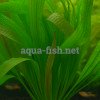 Aponogeton bovianus
Aponogeton bovianus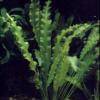 Aponogeton crispus
Aponogeton crispus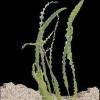 Aponogeton longiplumulosus
Aponogeton longiplumulosus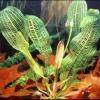 Aponogeton madagascariensis
Aponogeton madagascariensis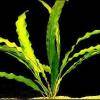 Aponogeton rigidifolius
Aponogeton rigidifolius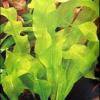 Aponogeton ulvaceus
Aponogeton ulvaceus Aponogeton undulatus
Aponogeton undulatus